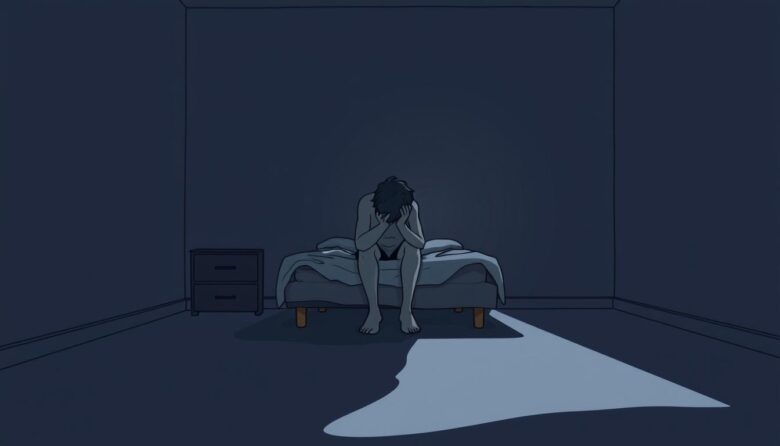Modern connections often vanish without explanation. A recent survey of 5,000 U.S. adults reveals 76% have either ended a relationship abruptly or experienced sudden disappearance from a partner. Nearly 60% report being on the receiving side, while 45% admit to initiating this silent exit.
This behavior isn’t just awkward—it leaves scars. Studies link abrupt communication cuts to heightened loneliness and reduced life satisfaction. Researchers found patterns of mixed signals followed by silence create lasting emotional strain, particularly among younger demographics.
Digital platforms make it easier to disappear, but the consequences are real. Many struggle with self-doubt when connections dissolve unexpectedly. Professionals now recognize these experiences as more than dating frustrations—they’re catalysts for deeper psychological challenges.
Understanding why people choose silence over closure matters. Cultural shifts toward avoidance reshape how we handle conflict. This trend reflects broader changes in communication norms, demanding new approaches to emotional well-being in relationships.
Understanding Ghosting in Modern Dating
The disappearance of a once-active chat has become a hallmark of contemporary romance. Digital platforms enable partners to vanish mid-conversation, leaving the other person questioning what went wrong. This phenomenon now has an official label in modern dating culture.
Defining Ghosting and Situationships
Merriam-Webster describes ghosting as suddenly cutting off all contact without explanation. Certified sex therapist Dr. Rufus Tony Spann notes it often stems from an inability to express disinterest directly. The rise of undefined connections amplifies this trend—35% of Gen Z prefers casual situationships over labeled relationships, according to a 2022 YPulse survey.
Motivations Behind Abrupt Disconnections
Fear of confrontation tops the list of reasons people choose silence. Dating apps create disposable connections, making exits feel less personal. Younger generations often prioritize convenience over clarity, with 20% of Gen Z admitting to situationship involvement.
Emotional immaturity and conflict avoidance also play key roles. When expectations remain unspoken, disappearing acts become an easy escape route. This pattern reflects broader cultural shifts toward instant gratification and reduced accountability in personal interactions.
Survey Insights on Ghosting Trends
Recent data reveals stark contrasts in how Americans handle romantic exits. The Forbes Health survey maps these patterns across state lines and gender lines, showing how cultural norms shape modern relationship behaviors.
State-by-State Findings and Statistical Highlights
Rhode Island leads in abrupt exits, with 1 in 3 residents reporting ghosting experiences. North Dakota and Wyoming follow closely, while Oregon and Hawaii show the lowest rates. Urban centers like Chicago and Columbus see higher occurrences, likely influenced by dense dating app usage.
Regional attitudes play a key role. Midwestern states with tight-knit communities report fewer disappearances, suggesting face-to-face accountability matters. Coastal tech hubs display higher digital exit rates, mirroring fast-paced lifestyles.
Gender Differences in Ghosting Behaviors
Contrary to stereotypes, women edge out men in initiating silent exits (47% vs 44%). However, 64% of males report being ghosted versus 57% of females. This gap widens in app-based interactions where 63% admit cutting contact before meeting in person.
Early-stage connections prove most fragile. Over half of respondents ended things after one physical date, while two-thirds vanished from digital-only chats. These behaviors reflect how dating platforms prioritize convenience over meaningful closure.
The Psychological Effects of Being Ghosted
Sudden silence in relationships activates primal psychological mechanisms. Over half of ghosted individuals report intense distress, while 39% describe feeling personally inadequate. Paradoxically, 29% experience relief—a response more common among men (27%) than women (17%).
Emotional Responses and Initial Shock
The brain processes unexplained rejection like physical pain. Stress hormones flood the system, triggering fight-or-flight responses. Many spend hours analyzing past interactions for hidden clues, a behavior psychologists call “relationship autopsies.”
Gender gaps surface in coping styles. Women are 47% more likely to develop dating-related anxiety afterward. Men frequently mask hurt with indifference, though 1 in 4 admit to emotional numbness lasting weeks.
Long-Term Mental Health Considerations
Repeated ghosting experiences can alter brain chemistry. The anterior cingulate cortex—responsible for emotional regulation—shows decreased activity in frequent victims. This neurological shift increases vulnerability to chronic stress and social withdrawal.
Trust issues often persist long after the situation ends. Some develop hypervigilance, interpreting minor communication delays as impending abandonment. Therapy helps rebuild self-worth, but 35% report lasting difficulties forming secure attachments.
Exploring the Ghosting Impact on Mental Health
Unexplained rejection triggers biological responses comparable to physical injury. A 2023 study in the International Journal of Environmental Research shows abrupt relationship endings correlate with 42% higher loneliness scores. Over half of affected individuals develop persistent negative self-talk patterns.
Impact on Anxiety, Depression, and Self-Esteem
Dr. Litam’s research reveals 68% of ghosted adults replay imagined personal flaws. This rumination cycle fuels anxiety spikes and depressive symptoms. Brain scans show increased activity in pain-processing regions during rejection recall.
Repeated experiences create lasting neural pathways. Some develop social avoidance behaviors, fearing new connections might vanish. Self-worth erosion becomes common, with 55% reporting decreased confidence in future relationships.
Therapeutic Approaches and Support Resources
Cognitive-behavioral therapy helps reframe abandonment narratives. Specialists teach clients to identify distorted thoughts like “I deserved this silence.” Group sessions normalize experiences while building communication skills.
Digital platforms now offer ghosting-specific counseling modules. Therapists use role-playing exercises to process unresolved endings. Community forums provide peer validation, reducing isolation through shared recovery stories.
Dr. Spann emphasizes early intervention: “Unaddressed emotional wounds can solidify into chronic conditions.” Crisis hotlines report 22% increases in calls related to digital rejection, prompting expanded training for support staff.
Modern Markers: Situationships and Undefined Relationships
Romantic ambiguity has become its own language in digital dating. Olivia Verhulst, a licensed psychotherapist, defines situationships as “connections lacking commitment or clear expectations.” These arrangements thrive where vulnerability meets convenience—49% of Tinder users now reference situationships in bios, per 2022 platform data.
Attachment Styles and Communication Barriers
Dr. Litam identifies insecure avoidant attachment as a key driver. People craving connection while fearing abandonment often choose undefined relationships. Childhood experiences with inconsistent caregivers frequently shape these patterns, creating adults who equate intimacy with lost independence.
Modern dating norms amplify communication challenges. Many avoid defining relationships to dawkward conversations about needs. “It’s easier to vanish than voice discomfort,” explains Verhulst. This avoidance creates fertile ground for sudden exits—45% of ghosting cases originate in situationships.
Therapeutic interventions focus on breaking fear-based cycles. Specialists help clients recognize how unspoken expectations enable harmful behaviors. Building direct communication skills proves vital for creating relationships that honor both autonomy and emotional safety.
Addressing and Healing from Ghosting
Rebuilding after unexplained silence requires intentional strategies. Professionals emphasize combining practical tools with emotional support to navigate recovery effectively.
Clear Dialogue as Foundation
Direct communication prevents future misunderstandings. Practice stating needs early: “I value check-ins” or “Let’s define expectations.” Role-play tough conversations with trusted friends to build confidence.
Boundary-setting apps like Notion help track relationship goals. Weekly reflection journals identify patterns in partner selection. These habits create accountability while reducing avoidance tendencies.
Professional Guidance Pathways
Therapy offers structured frameworks for processing unresolved endings. Cognitive-behavioral methods help reframe thoughts like “Was I unworthy?” into “This reflects their limits.”
Group sessions normalize shared experiences through moderated discussions. Many find relief discovering others faced similar situations. Apps like BetterHelp now provide ghosting-specific treatment modules.
Daily self-care rituals rebuild stability. Morning affirmations combat negative self-talk. Physical activities like yoga regulate stress hormones. Support networks become lifelines—72% report faster healing when involving close friends.



